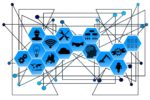You are currently viewing SemiWiki as a guest which gives you limited access to the site. To view blog comments and experience other SemiWiki features you must be a registered member. Registration is fast, simple, and absolutely free so please,
join our community today!
WP_Term Object
(
[term_id] => 6435
[name] => AI
[slug] => artificial-intelligence
[term_group] => 0
[term_taxonomy_id] => 6435
[taxonomy] => category
[description] => Artificial Intelligence
[parent] => 0
[count] => 759
[filter] => raw
[cat_ID] => 6435
[category_count] => 759
[category_description] => Artificial Intelligence
[cat_name] => AI
[category_nicename] => artificial-intelligence
[category_parent] => 0
[is_post] =>
)
There is a famous scene in the 1976 movie Taxi Driver when Robert De Niro’s character Travis is pretending to have a conversation looking in the mirror and repeatedly saying “Are you talking to me?”. I think about this scene every time I use a voice active device – Hey, are you talking to me? Yes, I am, but are you listening?
Voice command,… Read More
A few months ago, I wrote about the announcement of a new digital full flow from Cadence. In that piece, I focused on the machine learning (ML) aspects of the new tool. I had covered a discussion with Cadence’s Paul Cunningham a week before that explored ML in Cadence products, so it was timely to dive into a real-world example of the … Read More
There have been a multitude of announcements recently relative to the incorporation of machine learning (ML) methods into EDA tool algorithms, mostly in the physical implementation flows. For example, deterministic ML-based decision algorithms applied to cell placement and signal interconnect routing promise to expedite… Read More
An Artificial Intelligence (AI) system is only as good as its training. For AI Machine Learning (ML) and Deep Learning (DL) frameworks, the training data sets are a crucial element that defines how the system will operate. Feed it skewed or biased information and it will create a flawed inference engine.
MIT recently removed … Read More
I believe I asked this question a year or two ago and answered it for the absolute bleeding edge of datacenter performance – Google TPU and the like. Those hyperscalars (Google, Amazon, Microsoft, Baidu, Alibaba, etc) who want to do on-the-fly recognition in pictures so they can tag friends in photos, do almost real-time machine… Read More
Presto Engineering recently held a webinar discussing vision chip technology – what a vision chip is, what are the applications and how can you optimize its use. Samer Ismail, a design engineer at Presto Engineering with deep domain expertise in vision chip technology was the presenter. Samer takes you on a very informative … Read More
Value chains can be very robust and seemingly unbreakable – until they’re not. One we’ve taken for granted for many years is the chain for electronics systems in cars. The auto OEM, e.g. Toyota, gets electronics module from a Tier-1 supplier such as Denso. They, in turn, build their modules using chips from a semiconductor chip maker… Read More
According to experts, there are five key benefits of crowdfunding platforms: efficiency, reach, easier presentation, built-in PR and marketing, and near-immediate validation of concept, which explains why crowdfunding has become an extremely useful alternative to venture capital (VC), and has also allowed non-traditional… Read More
Can we predict where bugs are most likely to be found, to better direct testing? Paul Cunningham (GM of Verification at Cadence), Jim Hogan and I continue our series on novel research ideas, again through a paper in software verification we find equally relevant to hardware. Feel free to comment if you agree or disagree.
The Innovation… Read More
COVID-19 has demonstrated the importance of digital readiness, which allows business and people’s life to continue as usual during pandemics. Building the necessary infrastructure to support a digitized world and stay current in the latest technology will be essential for any business or country to remain competitive in a … Read More











Quantum Advantage is About the Algorithm, not the Computer